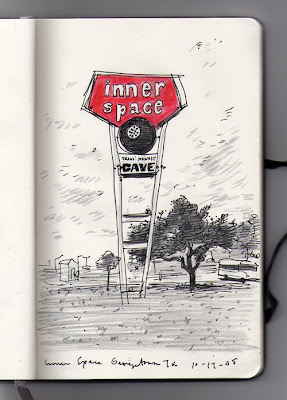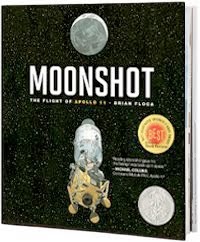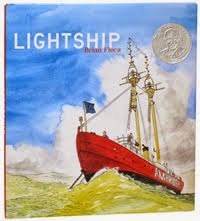If you’re in New York — or possess motivation and means to arrive by the weekend — I hope you’ll come by Books of Wonder bookstore — at 18 W. 18th Street — on Saturday, November 1, from 12 to 2 PM. I’ll be there at the signing table, in the good company of authors and illustrators Edward Hemingway, John Bemelmans Marciano, Paul Zelinsky, and Etienne Delessert.
I hope I’ll see you there!
Wednesday, October 29, 2008
Monday, October 27, 2008
Reading and Sharing

Some good Hinky-Pink news: Reliable sources report that The Hinky-Pink has been chosen for this year’s New York Public Library’s 100 Titles for Reading & Sharing list. I can’t find the full list online just yet, but I’ll post the link here when/if it appears. Meanwhile, thank you, NYPL!
Saturday, October 18, 2008
Space Mouse (Inner Space)
 I don’t think it’s giving away too much to say that some action in Avi’s forthcoming Poppy and Ereth will occur in a cave. A trip to Texas has given me a chance to research those scenes, and to revisit the site of a childhood trip, at Laubach Cave near Georgetown, Texas.
I don’t think it’s giving away too much to say that some action in Avi’s forthcoming Poppy and Ereth will occur in a cave. A trip to Texas has given me a chance to research those scenes, and to revisit the site of a childhood trip, at Laubach Cave near Georgetown, Texas.The caves were discovered in 1963 during drilling by the Texas Highway Department. The drill got about 40 feet deep into the ground — and then the bit fell off. A department geologist, the skinniest available, was lowered down the narrow hole into a vast cavern loaded with limestone formations and even some prehistoric remains. The caves were opened to the public as a commercial venture and, in an attempt to connect with the then consuming space race — another segue! — were given the name by which they are now best known, “Inner Space Caverns.”
The sign out front of the caverns, just off Exit 259 on I-35 today, still has that space-age feel. The set of lights inside that big black ball pulse on and off, and when you see the thing as you’re driving by, it lends your trip a strange malevolent Sputnik/Great of Eye of Sauron mood. But if the sign seems dated, the caves (truly dated) hold up. There are spectacular formations in them, and if you’re in the area it’s worth the visit.
More about the caverns at the Inner Space website, here.
Saturday, October 11, 2008
Countdown: Apollo 7
Moonshot’s spring publication date will have the book out in time for the 40th anniversary of the first Moon landing, and I thought it might be interesting as we approach that date to mark the Apollo flights that preceded 11. Today, October 11, marks forty years since the launch of Apollo 7.
Apollo 7 was the first manned flight of both a Saturn launch vehicle and one of the two Apollo spacecraft designed to travel to the Moon, the joined Command and Service Modules, or CSM. The second spacecraft — the Lunar Module, or LM — was not part of the flight, for two good reasons. One, the LM still being built and, two, the crew of Apollo 7 had enough to do testing out the CSM. This was especially true given the fact that just a year and a half earlier, in January, 1967, in a ground test later designated Apollo 1, astronauts Virgil Grissom, Edward White, and Roger Chaffe had been killed when a fire broke out in the Command Module in which they were conducting a launch simulation.
For the ten days that Apollo 7 was in orbit (Apollo flights 2 through 6 had been unmanned tests), Walter Schirra, Jr., Donn Eisele, and Walter Cunningham worked over the CSM, testings its systems and maneuverability. The mission was a success, in some part at least due to changes in the CSM design that were made in the wake of the tragedy of Apollo 1. It was a success, too, despite the fact that shortly into the mission the crew developed bad colds, which didn’t help anyone’s mood, which in turn strained relations between the crew and Mission Control — a rare occurrence in the history of the program. (Having just gotten over a long cold myself, I’m freshly positioned to sympathize with Schirra, Eisele, and Cunningham. Reports suggest that as bad as nasal congestion is on Earth, it’s worse in zero gravity.)
With the accomplishments of Apollo 7, the stage was set for testing the CSM and the LM together, again in Earth orbit. Delays in the production of the LM threatened that mission, though, and with it NASA’s chances of putting a man on the Moon before the end of the '60s. Kennedy’s “before this decade is out” deadline may have had a touch of the arbitrary to it, but the 400,000 people who worked on the Apollo program set out to meet it with an incredible dedication.
So, stay tuned to see how NASA responded to the threat to Apollo 8, a decision which transformed 8 into one of the most daring and moving of all the Apollo missions and which kept the program on its timeline.
Coming next: The Christmas flight of Apollo 8. Watch this space. (No pun intended.)
Coming next: The Christmas flight of Apollo 8. Watch this space. (No pun intended.)
Friday, October 3, 2008
Subscribe to:
Posts (Atom)






